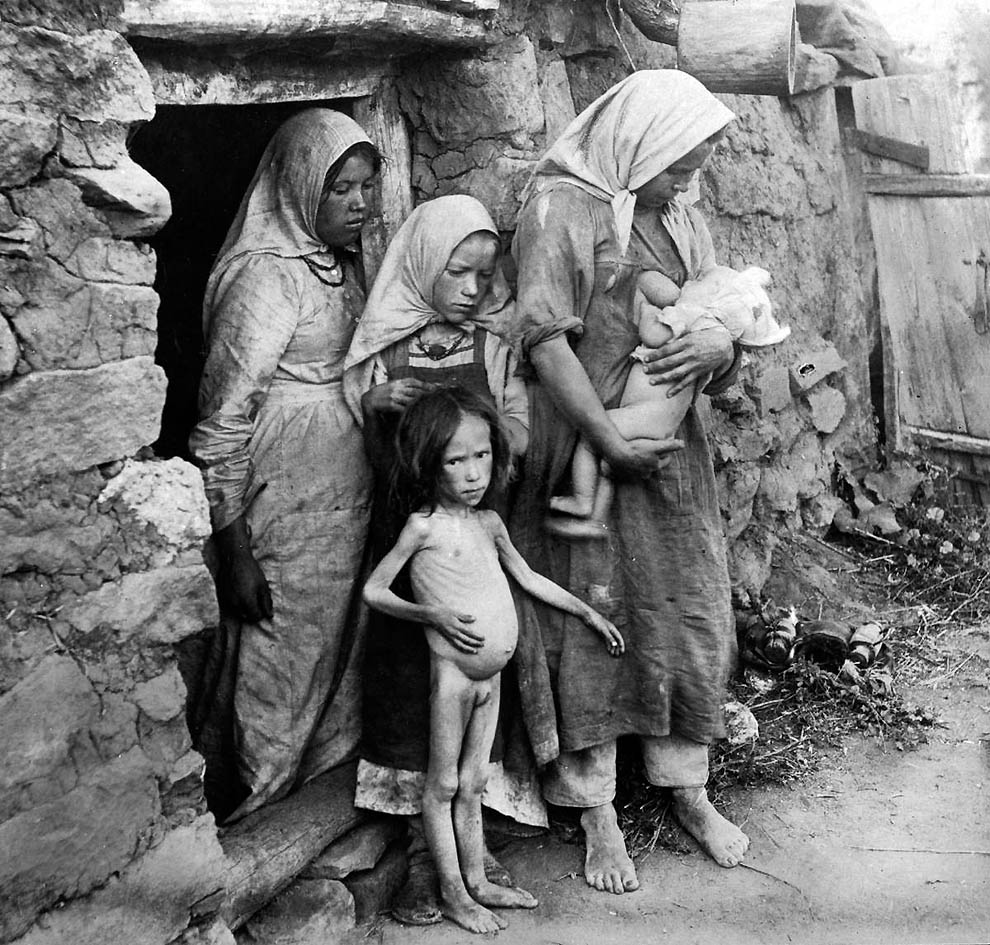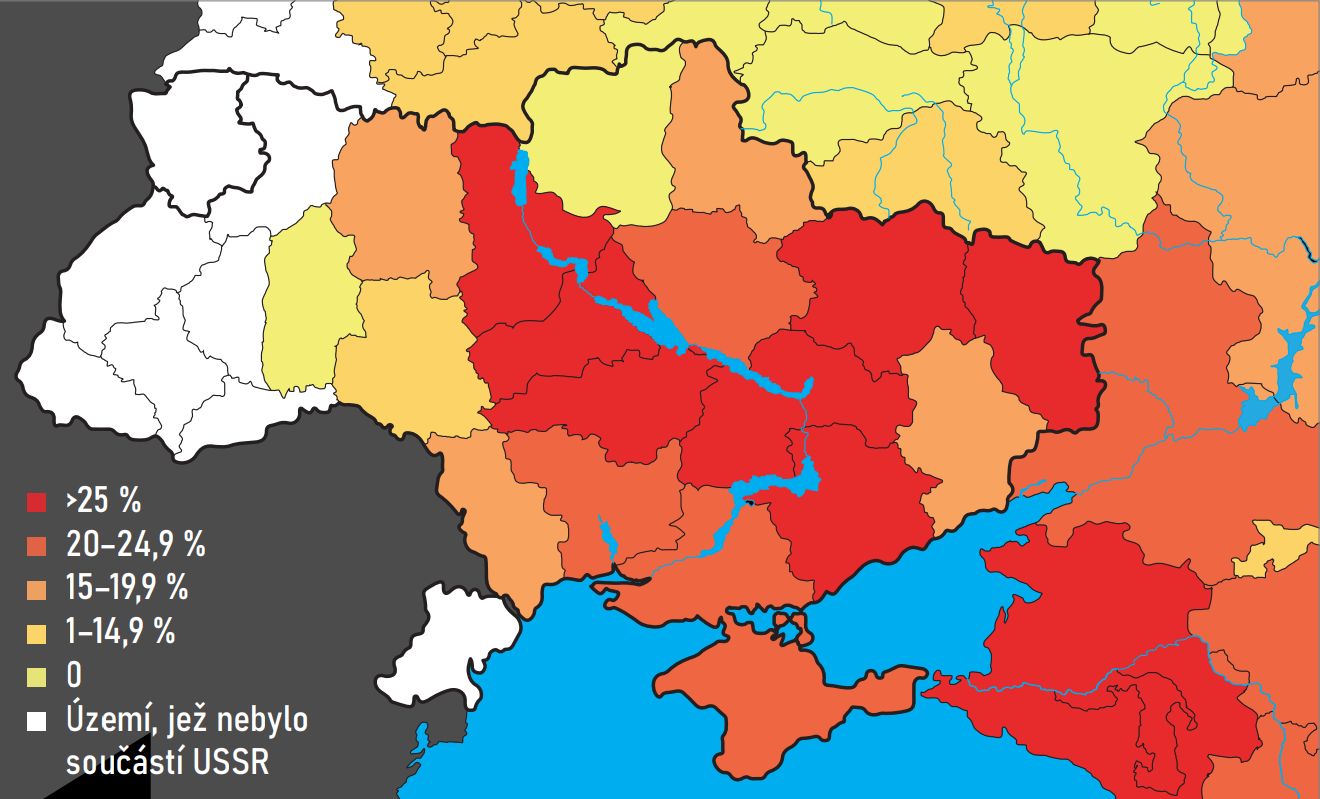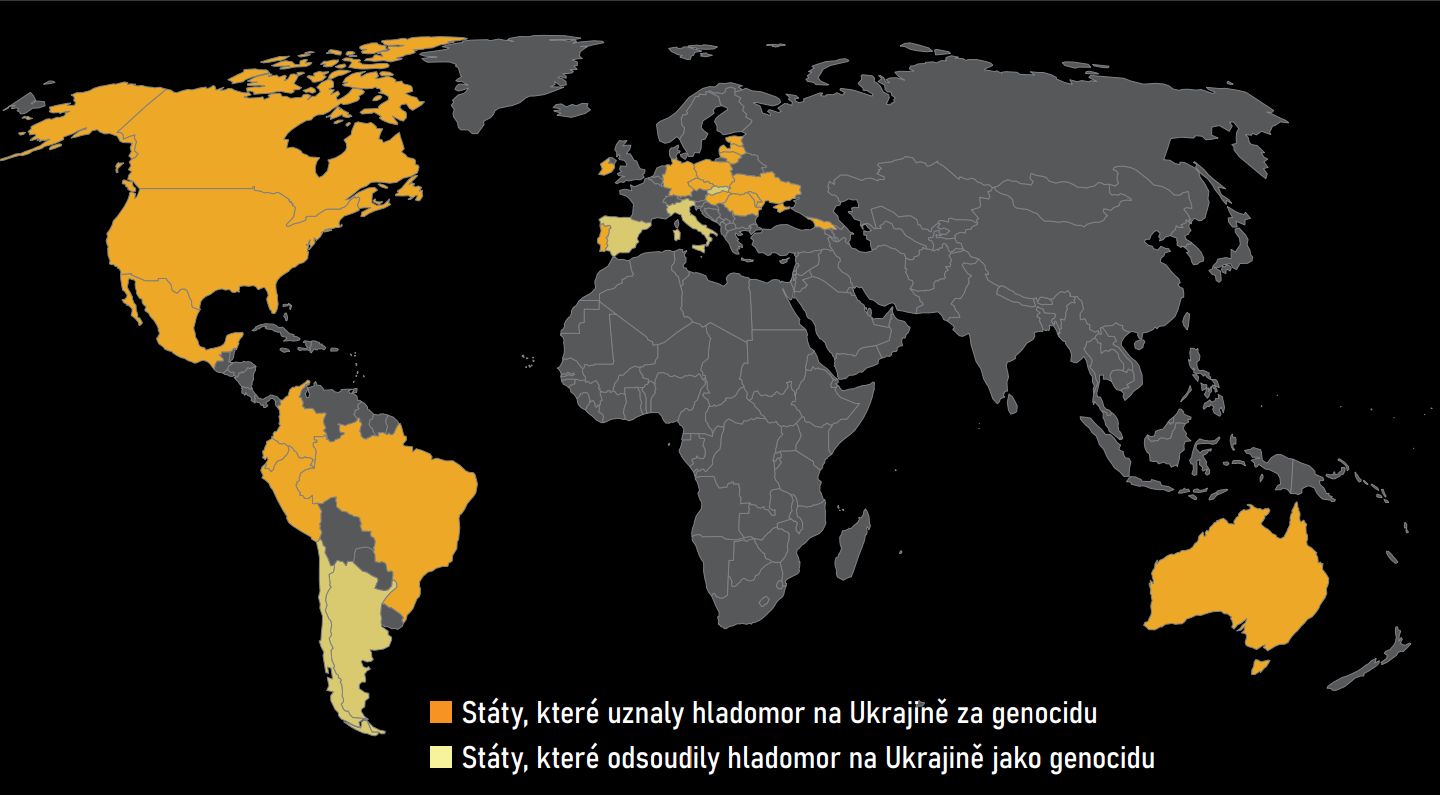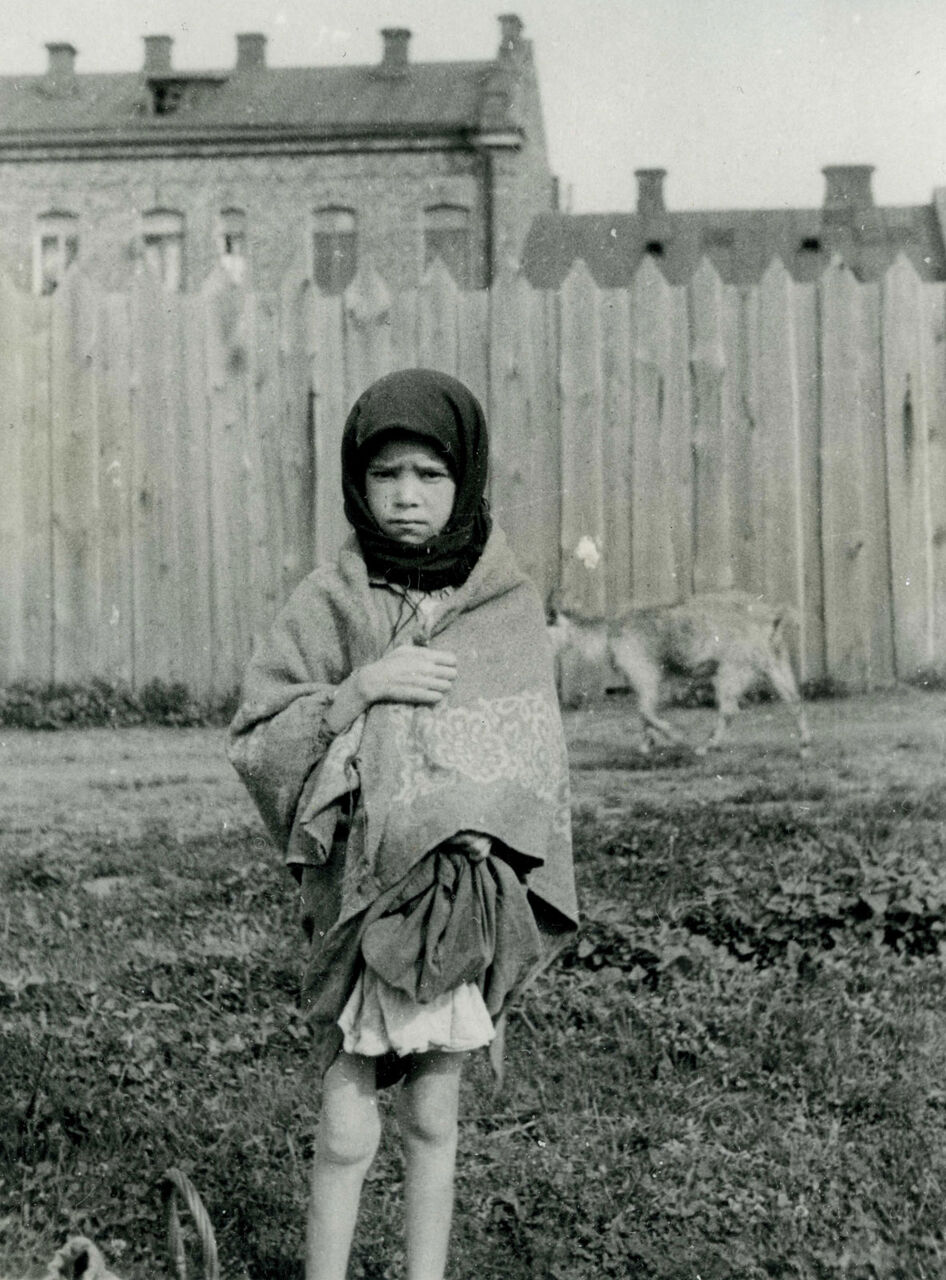01 FAMINE IN UKRAINE
The famine (or famines) in Ukraine are regarded as some of the most devastating disasters of the 20th century. They occurred during the periods of 1921–1923, 1932–1933 and 1946–1947.
FAMINE IN THE 1920s
The famine of the 1920s was caused by a combination of factors, including World War I, the Russian Civil War and crop failures caused by drought. However, a major contributor was the ruthless economic policy of Lenin's Bolshevik regime, which systematically decimated areas of Russia and Ukraine that resisted his control. Ukraine, which was striving for independence, was hit particularly hard. About 5 million people, mostly children, died in the famine across Russia and Ukraine.

Victims of the 1920s famine, the Volga region
FAMINE IN THE 1930s
In 1928, the Soviet Union launched the so-called First Five-Year Plan, which aimed at rapid industrialisation and was financed by selling grain abroad. To facilitate grain collection, the government began an intensive, often involuntary and violent collectivisation of agriculture, especially in Ukraine and the Kuban region, home to Ukrainian Cossacks. When the newly formed collective farms failed to meet the state-mandated grain quotas, Stalin sent troops to Ukraine to confiscate all agricultural produce, including seeds for the next planting season. In 1932, this led to famine in Ukraine. Instead of easing their grain demands, the Bolsheviks intensified their terror, conducting widespread search operations and confiscating any food found in farmers' homes. These brutal repressions resulted in a catastrophe of immense proportions. It is generally reported that 5 million people did not survive the famine, though other sources estimate the figure to be between 3 and 10 million.
Territories with the greatest population loss in 1929–1933

Territory not part of the USSR

Map of countries recognising the Ukrainian famine as genocide
Countries recognising the famine in Ukraine as genocide
Countries condemning the famine in Ukraine as genocide

Photographs of starving people in Kharkiv, Ukraine, taken by Alexander Wienerberger, an Austrian engineer working in a Kharkiv factory. He secretly documented the suffering of Ukrainians in the 1930s. These images are among the few pieces of pictorial evidence of the Ukrainian tragedy, which the Bolshevik regime systematically denied.
FAMINE IN THE 1940s
The last major famine in the Soviet Union claimed over a million lives. It was caused by the devastation of agriculture after World War II and severe droughts. However, the primary blame lies with Stalin and his Politburo, who had Ukrainian grain exported to war-torn Europe as a show of brotherly assistance to demonstrate the "great achievements of the socialist regime".



